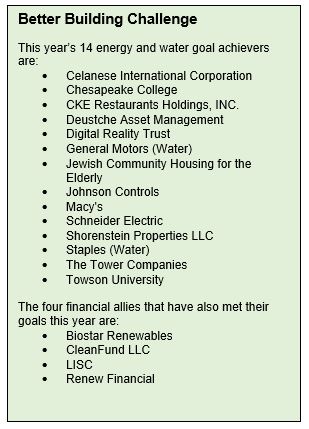WASHINGTON, May 17, 2017 - What do General Motors, Chesapeake College and Macy’s all have in common? Each successfully participated in the U.S. Department of Energy’s (DOE) Better Buildings Challenge.
The goal of the challenge is to make commercial, public, industrial, and residential buildings 20 percent more energy efficient over the next decade by focusing on overcoming market barriers and sharing partner-created solutions. More than 900 organizations across many diverse sectors are now part of the Better Buildings Initiative. These partners represent more than 13 percent of total U.S. commercial building space, about 12 percent of the U.S. manufacturing energy footprint, and 125 state and local governments. More than a third (345) of these organizations have taken the Better Buildings Challenge.
 These efforts have led to savings of 240 trillion British thermal units (BTUs) and an estimated $1.9 billion in cost savings, according to DOE.
These efforts have led to savings of 240 trillion British thermal units (BTUs) and an estimated $1.9 billion in cost savings, according to DOE.
Results are summarized in the 2017 Better Buildings Progress Report released Tuesday, which highlights accomplishments to date.
“Through the Better Buildings Initiative, hundreds of leaders from the public and private sectors are demonstrating innovative approaches and deepening American investments in critical building infrastructure,” said Energy Secretary Rick Perry. “By planning ahead and investing in cost-effective energy efficiency strategies, partners are bringing better buildings to our communities and improving the everyday places Americans live and work, while creating new and lasting jobs.”
The challenge requires a commitment by an institution to improve the energy intensity across its entire building portfolio by at least 20 percent within a decade. Participating organizations represent more than 4.4 billion square feet of building space, include more than 1,000 industrial facilities, and have committed $7 billion in financing. Partners have shared energy performance results for nearly 38,000 properties. On average, partners are improving by more than 2 percent per year, and are staying on track to meet their energy-savings goals of 20 percent over the next 10 years.
This year, 18 Better Buildings Challenge partners and allies met their energy, water, or financing goals. Since the start of the program, 40 Challenge partners have met their energy goals, six have met their water goals, and 12 financial allies placed sufficient investments to meet their financing goals.
#30


